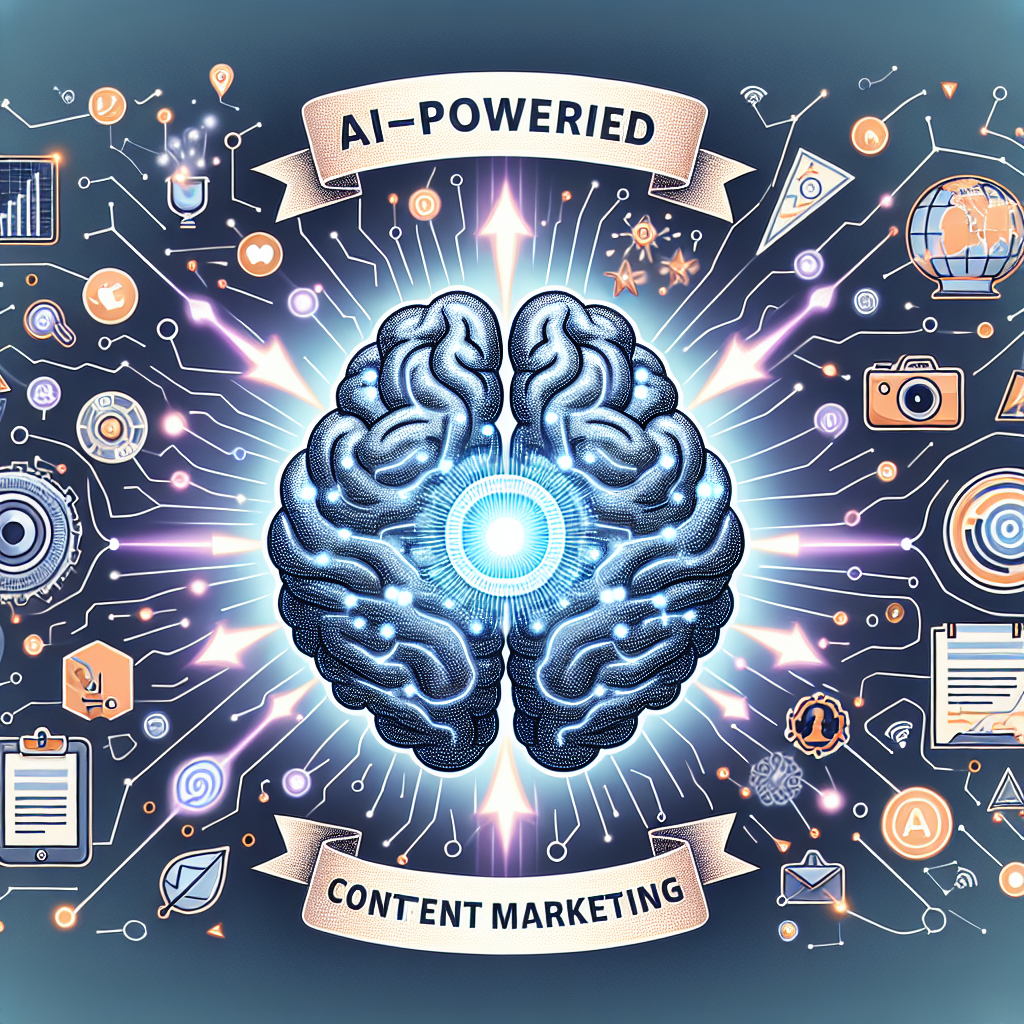The race for supremacy in the AI chip market has intensified, with tech giants competing for dominance in a rapidly evolving field. As artificial intelligence becomes increasingly integral to various sectors, the demand for specialized hardware capable of efficiently processing AI workloads has surged. Companies are investing heavily in research and development to create chips that can handle complex algorithms and large datasets, leading to a fierce competition that is reshaping the landscape of technology.
This competition is not just about performance; it also encompasses energy efficiency, cost-effectiveness, and scalability, making it a multifaceted challenge for industry players. In this dynamic environment, Google has emerged as a formidable contender with its Tensor Processing Units (TPUs). These custom-built chips are designed specifically for machine learning tasks, allowing Google to optimize its AI capabilities while maintaining a competitive edge.
The implications of this competition extend beyond the tech industry, influencing how businesses operate and how consumers interact with technology. Understanding the nuances of this AI chip competition is crucial for stakeholders looking to navigate the future of technology. Try iAvva AI for free.
Key Takeaways
- The AI chip market is highly competitive, with companies vying for leadership in developing cutting-edge technology.
- Google’s TPU strategy focuses on creating custom-designed chips optimized for machine learning workloads, giving them a competitive edge in the market.
- AI chip technology has evolved rapidly, from traditional CPUs and GPUs to specialized chips like TPUs, enabling faster and more efficient processing of AI workloads.
- Google has established itself as a leader in AI chip development, with a strong focus on innovation and pushing the boundaries of what is possible in AI hardware.
- The competition in the AI chip market is fierce, with companies like NVIDIA, Intel, and AMD also making significant strides in developing AI-specific hardware.
Overview of Google’s TPU Strategy
Google’s TPU strategy is centered around creating a dedicated hardware platform that enhances its machine learning capabilities. The company recognized early on that traditional CPUs and GPUs were not sufficient to meet the demands of AI workloads. As a result, Google developed TPUs, which are tailored specifically for tensor processing—an essential operation in deep learning.
This strategic move has allowed Google to accelerate its AI research and development, leading to breakthroughs in various applications, from natural language processing to image recognition. The deployment of TPUs across Google’s cloud services has further solidified its position in the AI chip market. By offering TPUs as part of Google Cloud, the company provides businesses with access to powerful computing resources without requiring significant upfront investments in hardware.
This approach not only democratizes access to advanced AI capabilities but also positions Google as a leader in cloud-based AI solutions. The TPU strategy exemplifies how targeted investments in specialized hardware can yield substantial returns in performance and efficiency.
Evolution of AI Chip Technology

The evolution of AI chip technology has been marked by significant advancements in architecture and design. Initially, general-purpose processors dominated the landscape, but as AI applications grew more complex, the limitations of these chips became apparent. The introduction of GPUs revolutionized the field by providing parallel processing capabilities that significantly improved performance for machine learning tasks.
However, even GPUs have their constraints when it comes to specific AI workloads. In response to these challenges, companies began developing application-specific integrated circuits (ASICs) designed explicitly for AI tasks.
The evolution of AI chip technology reflects a broader shift towards specialization, where companies are increasingly focused on creating hardware that meets the unique demands of artificial intelligence.
Google’s Leadership in AI Chip Development
| Company | Development | Performance |
|---|---|---|
| Leadership in AI Chip | High performance in AI tasks |
Google’s leadership in AI chip development is underscored by its commitment to innovation and research. The company has invested billions in developing TPUs and has continually iterated on their design to enhance performance and efficiency. This dedication to improvement has resulted in multiple generations of TPUs, each offering increased processing power and reduced energy consumption.
Google’s ability to leverage its vast data resources and machine learning expertise has enabled it to stay ahead of competitors in the AI chip space. Moreover, Google’s open-source initiatives, such as TensorFlow, have further solidified its leadership position. By providing developers with tools and frameworks to build AI applications, Google fosters a vibrant ecosystem that encourages collaboration and innovation.
This approach not only benefits Google but also empowers businesses and researchers worldwide to harness the power of AI, driving further advancements in chip technology.
Competition in the AI Chip Market
The competition in the AI chip market is fierce, with several key players vying for dominance alongside Google. Companies like NVIDIA, Intel, and AMD have made significant strides in developing their own AI-focused hardware solutions. NVIDIA’s GPUs have become synonymous with deep learning due to their parallel processing capabilities, while Intel has invested heavily in acquiring companies that specialize in AI chip technology.
This competitive landscape is characterized by rapid innovation and constant evolution as companies strive to outpace one another. As the demand for AI capabilities continues to grow across industries, new entrants are also emerging in the market. Startups focused on developing specialized AI chips are gaining traction, further intensifying the competition.
This influx of players is driving innovation and pushing established companies to continuously improve their offerings. The result is a dynamic market where advancements in AI chip technology are occurring at an unprecedented pace.
Lessons Learned from Google’s TPU Strategy

Google’s TPU strategy offers valuable lessons for organizations looking to navigate the complexities of AI chip development. One key takeaway is the importance of specialization. By focusing on creating hardware tailored for specific tasks, Google has been able to achieve significant performance gains over general-purpose chips.
This approach highlights the need for companies to assess their unique requirements and invest in solutions that align with their strategic goals. Another lesson is the value of collaboration and open-source initiatives. Google’s commitment to sharing its tools and frameworks has fostered a community of developers who contribute to the advancement of AI technology.
Organizations can benefit from adopting similar collaborative approaches, leveraging external expertise and resources to enhance their own capabilities. Ultimately, embracing specialization and collaboration can lead to more effective and innovative solutions in the rapidly evolving landscape of AI chip technology.
Impact of AI Chips on the Tech Industry
The impact of AI chips on the tech industry is profound, influencing everything from product development to operational efficiency. As companies integrate AI capabilities into their offerings, the demand for specialized hardware has surged. This shift is driving innovation across various sectors, enabling businesses to leverage data-driven insights and automate processes more effectively.
Moreover, AI chips are transforming consumer experiences by powering applications that enhance personalization and engagement. From virtual assistants to recommendation systems, the capabilities enabled by advanced AI chips are reshaping how consumers interact with technology. As businesses continue to adopt AI-driven solutions, the influence of these chips will only grow, further embedding artificial intelligence into everyday life.
Challenges and Opportunities in AI Chip Development
While the opportunities in AI chip development are vast, several challenges must be addressed. One significant hurdle is the rapid pace of technological advancement, which can make it difficult for companies to keep up with evolving demands and expectations. Additionally, the complexity of designing specialized hardware requires substantial investment in research and development, posing a barrier for smaller organizations.
However, these challenges also present opportunities for innovation. Companies that can navigate the complexities of AI chip development stand to gain a competitive advantage in an increasingly data-driven world. Collaborations between tech giants and startups can lead to breakthroughs that push the boundaries of what is possible with AI technology.
By embracing these challenges as opportunities for growth, organizations can position themselves at the forefront of the AI revolution.
Future Trends in AI Chip Technology
The future of AI chip technology is poised for exciting developments as advancements continue to unfold. One notable trend is the increasing focus on energy efficiency and sustainability. As concerns about climate change grow, there is a pressing need for chips that consume less power while delivering high performance.
Companies are investing in research aimed at creating energy-efficient architectures that can meet these demands without compromising on capabilities. Another trend is the rise of edge computing, where processing occurs closer to data sources rather than relying solely on centralized cloud infrastructure. This shift necessitates the development of smaller, more powerful chips capable of handling AI workloads at the edge.
As IoT devices proliferate and real-time data processing becomes essential, edge AI chips will play a crucial role in shaping the future landscape of technology.
Implications for Businesses and Consumers
The implications of advancements in AI chip technology extend beyond the tech industry, affecting businesses and consumers alike. For organizations, access to powerful AI capabilities can lead to improved decision-making processes and enhanced operational efficiency. Companies that leverage advanced AI chips can gain insights from vast amounts of data, enabling them to stay competitive in an increasingly dynamic market.
For consumers, the impact is equally significant. As businesses adopt AI-driven solutions powered by advanced chips, consumers will benefit from more personalized experiences and improved products and services. From smarter home devices to enhanced customer support systems, the integration of AI technology into everyday life will continue to evolve, shaping how individuals interact with technology daily.
Conclusion and Reflections on Google’s TPU Strategy
In conclusion, Google’s TPU strategy serves as a compelling case study in the rapidly evolving landscape of AI chip competition. By focusing on specialization and fostering collaboration within the developer community, Google has positioned itself as a leader in this space. The lessons learned from its approach offer valuable insights for organizations seeking to navigate the complexities of AI chip development.
As competition intensifies and new players emerge in the market, the future of AI chip technology holds immense potential for innovation and growth. By embracing challenges as opportunities and prioritizing energy efficiency and edge computing capabilities, companies can position themselves at the forefront of this transformative industry. Ultimately, the ongoing evolution of AI chips will continue to shape not only the tech industry but also the broader landscape of business and consumer experiences in an increasingly data-driven world.
The AI chip competition is reshaping the tech landscape, with companies like Google leading the charge through strategic innovations such as their TPU expansion. This move not only highlights how to scale innovation effectively but also offers valuable lessons in managing risk and building resilient teams. For those interested in further exploring leadership strategies in the age of artificial intelligence, the article “How to Lead Successfully in the Age of Artificial Intelligence” provides insightful guidance on navigating this dynamic field. As AI continues to evolve, understanding these strategies becomes crucial for maintaining a competitive edge.
FAQs
What is the current state of AI chip competition in the tech industry?
The current state of AI chip competition in the tech industry is intense, with major players like Google, Nvidia, and Intel vying for leadership in the development of AI-specific chips. These chips are crucial for powering the growing demand for AI and machine learning applications.
What is Google’s TPU and how does it factor into the AI chip competition?
Google’s TPU (Tensor Processing Unit) is a custom-designed chip specifically optimized for AI and machine learning workloads. It has been a key factor in Google’s ability to scale its AI capabilities and stay competitive in the AI chip market.
What lessons can tech leaders learn from Google’s TPU strategy?
Tech leaders can learn several lessons from Google’s TPU strategy, including the importance of investing in custom-designed hardware for AI workloads, the need to scale innovation to meet growing demand, the necessity of managing risk in developing new technologies, and the value of building resilient teams to support ambitious projects.
How is the AI chip competition reshaping tech strategy?
The AI chip competition is reshaping tech strategy by driving companies to invest in AI-specific hardware, prioritize innovation in chip design, and build teams with the expertise to develop and support AI chips. It is also influencing partnerships and acquisitions in the tech industry as companies seek to gain a competitive edge in AI chip development.










Leave a Reply